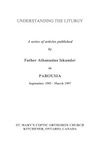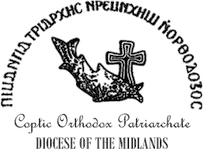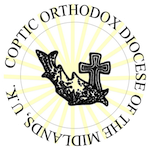
Understanding the Liturgy: Divisions of the Liturgy
Traditionally, the Liturgy is divided into two parts: The Liturgy of the word (or the Liturgy of the catechumens), which is the teaching part of the Liturgy, and the Liturgy of the Faithful or the Eucharist proper. Modern liturgical theologians [1] like to expand this to include 3 component parts, the Assembly, the Liturgy of the word, and the Anaphora (Liturgy of the Faithful) which ends with communion. This threefold division of the Liturgy is based on the story of the two disciples of Emmaus (Luke 24: 13_35). The two disciples were walking together, meditating on the events of the crucifixion and burial of the Lord. Suddenly, the Lord appears and walks with them, for indeed “where two or three are gathered in my name, there am I in the midst of them.” (Matt. 18:20). This corresponds to the first part of the Liturgy, the Assembly, when the people of God assemble to become the Church, the body of Christ. As in the incidence of Emmaus, the Lord (the head of the body) is always there amongst the assembled Church.
This is the preliminary part of the Liturgy, when we assemble for the “prayers of the hours”. In this part Christ reveals himself in the congregation. This is why the priest always faces the congregation during the prayers of the hours (the Agpeya).
The second phase of the story of Emmaus is when the Lord explains the Scriptures to the two disciples. This corresponds to the second part of the Liturgy, the part we call the Liturgy of the word, which consists mainly of scriptural readings and commentary (sermon). During this part, the Lord reveals himself to us in the scripture (the word). During the reading of the Gospel, the priest offers incense while facing the lectern.
The third phase of the story is when the Lord took bread, blessed it, brake and gave to them. This corresponds to the third part of the Liturgy, the Liturgy of the faithful. During this part, the Lord reveals himself to us in the bread and wine, which become the body and blood of our Lord. It is for this reason that the priest is always facing the altar while praying the “anaphora.”
Although the two disciples recognized the Lord only in the breaking of the bread, they recalled how their hearts were inflamed in them when the Lord spoke to them. In a similar manner, we can say that the Liturgy of the word inflames our heart and prepares us for the “breaking of the bread” (communion).









